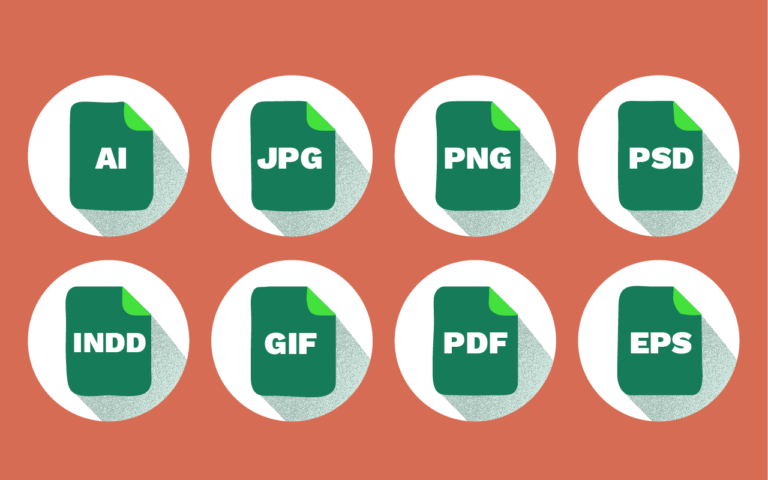
Music…the Fuel Behind Our Creativity
- GD Team
- News

You’ve just signed off on a new logo and a host of other brand assets from your designer. Now what? We’ve created this handy guide to your image files! It will help you understand the types of files you may come across, and how to properly choose one for a project. Be sure to bookmark this handy guideline!
First, you’ll need to understand some of the terms we use when describing graphic formats.
Usage: Print materials
CMYK is a subtractive system of color representation that is used for printed materials. A percentage of each color (cyan, magenta, yellow, and black) is layered on top of each other to create the final colors you see on pieces printed in “4-color process”. This is a common color mode for print graphic files, especially in the growing world of digital printing.
Usage: Print materials
Instead of layering to create a color, Pantone colors are achieved from specific ink formulas. Pantone colors are commonly used for printing logos, or when you need to make sure your primary branded colors print 100% accurate. Printing with PMS color can get expensive depending on how many colors you need to print. Under most circumstances, we will supply you with a 2 color PMS version of your logo, which is perfect for printing business stationary.
Usage: Web/digital assets
RGB is an additive system for generating/representing the colors displayed on screens (computer, cell phones, tablets, etc.). Differing percentages of each of the three colors are combined to create any color on the spectrum. RGB is the primary color space for digital and web assets.
Usage: Print and web
Raster images are photographs and graphics made up of pixels. When using raster software such as Photoshop, you’re essentially painting…mixing and blending colors with tiny pixels to create your image. Raster images are defined by specific proportions. If you try to enlarge them, they will start to get distorted and blurry.
Usage: Print materials
Vector files are typically illustrations that are composed of paths (think lines and shapes), not pixels. They are scalable in size. Vector files are essential for large format graphics because they will not get blurry or lose their print quality matter how large you scale them up.
Usage: Print
This file type is used for creating high quality graphics. We save photographs as EPS when we want to preserve high resolution format. We save illustrations as EPS when we want them to be scalable.
Usage: Print
PDFs were introduced to ease the sharing of documents between computers and across operating system platforms. They provide a complete and accurate snapshot of a document, including all text and images, to share with others for commenting or printing.
Usage: Print
Very large raster files that don’t lose their quality unless you start to scale the file up. No matter how many times you copy or resave a TIFF file, it always maintains the quality of the original file. This file type should be used for print only —mainly for high resolution photographs.
Usage: Web and sometimes print
Commonly used for web images such as logos or simple artwork that needs a transparent background. Because of the limited color palette that is inherent to PNG files, they are not a recommended file type for saving photos or any complicated artwork. If using for print, make sure that it is CMYK and high enough resolution to support print standards.
Usage: Web
JPG is a very commonly used compressed file format. Since the images are compressed without too much loss of data, they can be used for digital projects to optimize upload/download time, sharing, and storage (website, social media, emails, WordDocs, etc.) We do not recommend using JPGs for print. Even though the resolution can support print, every time a JPG is saved, more data is lost, resulting in a grainier image.
Usage: Web
A popular file format for vector graphics on the web. Browsers used to be a little unpredictable with SVG support, but nowadays all modern web browsers can handle SVG. The advantages of SVGs are scalability, cleanliness (you’ll almost never see a blurry SVG icon), and animate-ability. Best choice for logos, icons, and simple illustrations on the web